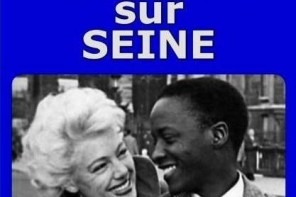“My work provides a new dialectical and conceptual context and direction for the preservation of some of those cultural activities, that have seemingly lost their glory or cultural relevance; and hence serves as a reminder to the people of their ancestral history” says Kumi Samuel.
Born in 1983 in the city of Berekum in the Brong Ahafo Region of Ghana West Africa, Kumi Samuel is a sculptor living and working in Kumasi. He is a holder of a B.F.A in Sculpture from the Kwame Nkrumah University of Science and Technology. During the academic year 2011-2012 he did his National Service as a teaching assistant at the Department of painting and Sculpture in the same University. During his studies he participated in the yearly internal exhibition called TraTech organized by the Student Representative Council aimed at showcasing the works and talents of students. Kumi has been working on a collection towards his debut solo exhibition “The Redeemed” which comprises of a series of subjects that give a reflection on childhood memories.
Over the centuries, art has been used to accurately communicate feelings, emotions and ideas which reflect the state of mind of its creators or the circumstance in which they find themselves. Art has surrounded mankind for as long as we can remember. It encompasses and projects humanity in its most simplistic and neutral form. Its fluidity permits a wide-scope analysis which explains why, viewpoints and consequent interpretations of these works vary tremendously and remain unique to every individual at both cognitive and situational levels.
Also read about Olamide Oresegun and his amazing paintings

When one talks of art it is very uncommon to hear people highlight a list of African names, as many minds tend to quickly wander to the European artistic scene where highly acclaimed artists like Michelangelo, Picasso, Van Gogh and several others remained timeless in the artistic cosmos. The richly endowed African continent still suffers from insufficient recognition and exposure, in spite of its enormous diversity and huge contribution to the world of art. According to Denise Murrell from the Department of Art History and Archaeology of the Columbia University, during the early 1900s, the aesthetics of traditional African sculpture became a powerful influence among European artists who formed an avant-garde in the development of modern art.
In France for instance Henri Matisse, Pablo Picasso and their School of Paris friends synchronised the highly stylized treatment of the human figure in African sculptures with painting styles derived from the post-Impressionist works of Cézanne and Gauguin. The resulting pictorial flatness, vivid colour palette, and fragmented Cubist shapes inspired originally by African art is said to have helped define early modernism within the artistic world. Although these artists knew nothing of the original meaning and function of the West and Central African sculptures they came across, they acknowledged the spiritual aspect of its composition and absorbed these qualities to their own works. This enabled them to create art beyond the naturalism that had dominated Western art since the Renaissance.
Until date art and craft continuous to play a key role in preserving and carrying on the rich pool of cultures in Africa. Africans like Kumi Samuel have taken particular interest in sculpting in a bid to make the African art great again. His skills in sculpting is the best means to make known and share the Ghanaian cultural believes and heritage with the rest of the world. The Hallmark of his work is the realistic rendition of his subjects through which he seeks to revive and reconcile indigenous and ethnic art with global artistic conceptions. His work appropriates from the sociocultural space through the activation of visual forms to traditional ideologies, mythologies, proverbs and cultural activities that are lost or seem to be diminishing from the society. In making great projection of the future, Kumi thinks the past becomes an arsenal of asserts and an inevitable archival reference necessitated by the present.
Find out about the Oyotunji village: the mini Yoruba empire in the USA
Kumi works predominantly with clay, resin and fiber glass cast to create real life sculptures ranging from miniature to full size sculptures. His commissioned sculptures are seen in various parts of Ghana of which the most famous is the 26 feet x 44 feet wall mural at the KOFCANS Hotel in Obuasi. “I still have hope in the revival of Africa figurative sculpture. I believe we still have more to offer to what is already characterized as African art” says Kumi Samuel. The sculptures of this visionary artist are so realistic, so much so that one of his admirers on social media commented “the only thing missing is the breath of life.”
Inspired by sub-Sahara Africa figurative sculpture, Kumi strongly believes that though ‘static’ and ‘un-proportional´ this form of art has more to offer historically, theoretically or conceptually and in terms of style, technique and process. All these aspects coupled with the western classical realism gives rise to another conversation of Afro-hyperrealism.





